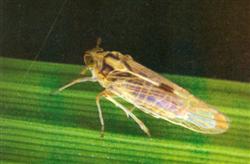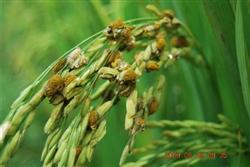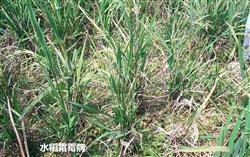Control of rice diseases and insect pests: how to control rice planthopper?

How to control rice planthopper? What harm does rice planthopper do to rice? Please introduce the harm of rice planthopper to rice: Rice planthopper is a frequent pest that seriously harms rice. At the initial stage of damage, there are many irregular brown spots on the stem, and when the damage is serious, the whole plant wilts and gradually expands into pieces; rice is damaged at booting stage and can not heading. After heading, it affects the plumpness of rice, reduces the weight of 1000 grains, and has a high rate of shrunken grain. The occurrence period of rice planthopper: generally, rice planthopper can occur from early rice seedling field to early October. There were two nymph peaks in early rice, the first from late May to early June, the second from late June to early July, the first nymph peak from mid-late June to early July, the second from mid-late July to early August, the first nymph peak in late rice from mid-late August to late September, and the second from mid-late September to early October. Generally, after transplanting double late rice, it is from late July to early August, and the number of rice planthopper is abnormal, which needs to be controlled in a large area. The white-backed planthopper accounted for more than 70% of the total in the peak period of the main damage generation, and white-backed planthopper was dominant in the early stage of late rice, and then the proportion of brown planthopper increased, up to 70% of the total planthopper. The reasons for the disease of rice planthopper are as follows: 1. Climatic factors-the average temperature in mid-late August is lower than 2-3 ℃, and the temperature in mid-late September is higher than that in previous years, while rice is in the peak tillering stage to booting stage, rich food conditions and hot and humid climate are very beneficial to the occurrence and damage of rice planthopper. 2. the factors of daily control-farmers can inhibit the growth of rice planthopper to a certain extent while controlling other pests such as Chilo suppressalis; on the other hand, because farmers are relatively independent and dispersed, the differences in the types and times of drug use also affect rice planthopper. Rice planthopper control methods: 1. Rice variety control methods-selecting hybrid rice combinations such as Weiyou 191, Ⅱ you 6078 and Guofeng 1 can get twice the result with half the effort in controlling the damage of rice planthopper. 2. Fertilizer application method-pay attention to the rational application of nitrogen, phosphorus and potassium, re-apply base fertilizer, apply fertilizer early, control the overgrowth of seedlings, improve the insect resistance of rice, and create a rice field environment that is not conducive to the occurrence of rice planthopper. 3. The method of eliminating the overwintering insect source-the insect eggs overwintered in the stems of Gramineae weeds beside the fields, ditches and ponds, and combined with fertilizer in winter to eradicate the weeds beside the fields and ponds to eliminate the overwintering insect sources. 4. Use the method of natural enemies-to reduce the use of pesticides in the early stage of rice field, and try not to use chemical pesticides that are lethal to natural enemies. 5. Pesticide prevention and control method-sufficient amount of water should be applied to ensure that the lower part of the rice plant is drenched with the liquid, and the shallow water layer in the field is about 6 cm, so as to improve the control effect. Low-toxic and low-residue pesticides such as Prochloraz or Zhuang'ai are generally used. Click to get more rice planting techniques click to get more food crop planting techniques
- Prev

Prevention and control of rice diseases and insect pests: how to control rice false smut?
How to prevent and cure false smut of rice? What are the hazards of rice false smut? Please introduce the harm of rice false smut: Rice false smut only occurs in the panicle, generally from flowering to milk stage, infected grains, the pathogen grows in the glume, forming rice koji with a diameter of about 1 cm instead of rice grains. ...
- Next

Rice pest control: what is rice downy mildew?
What is rice downy mildew? What are the hazards of rice downy mildew? How to prevent and cure rice downy mildew? Please guide the harm of rice downy mildew: Rice downy mildew generally appears symptoms in the late stage of seedling field, and the symptoms are significant in the peak tillering stage. The diseased plant is dwarf, the leaf color is light green; the leaves have yellow-white dots, round or oval.
Related
- The first cup of black tea in spring, the flavor and history of tea gardens in Kenya, Africa
- The computer can not only choose potatoes, but also grow tea rice. AI will grow winter oolong tea champion.
- It is not only the inflated tea bitten by insects, but also engraved with the four seasons tea in Beipu.
- The Oriental Beauty Tea Festival in Zhuxian County takes the stage at the weekend to experience the plus-size feast of oil tea.
- & quot; Oriental Beauty Tea & Exploration of Emei in Hsinchu, the hometown of quot;
- The new variety of strawberry "Tainong 1" dessert is the first choice with mellow aroma. Crimson gorgeous
- History of Tea in Taiwan: from Wild Inner Mountain to Export Tea Garden
- Two types of Taiwan Oriental Beauty Black Tea won the British three-Star Award for Childhood Tea Xiang Zhang Jiaqi changed from pilot to champion tea maker.
- Banana species and varieties: the planting history of Taiwan Xianren banana and dwarf banana is long, is banana disease resistant?
- Coffee planting Technology: Qianjie Coffee from Seedling to harvesting

